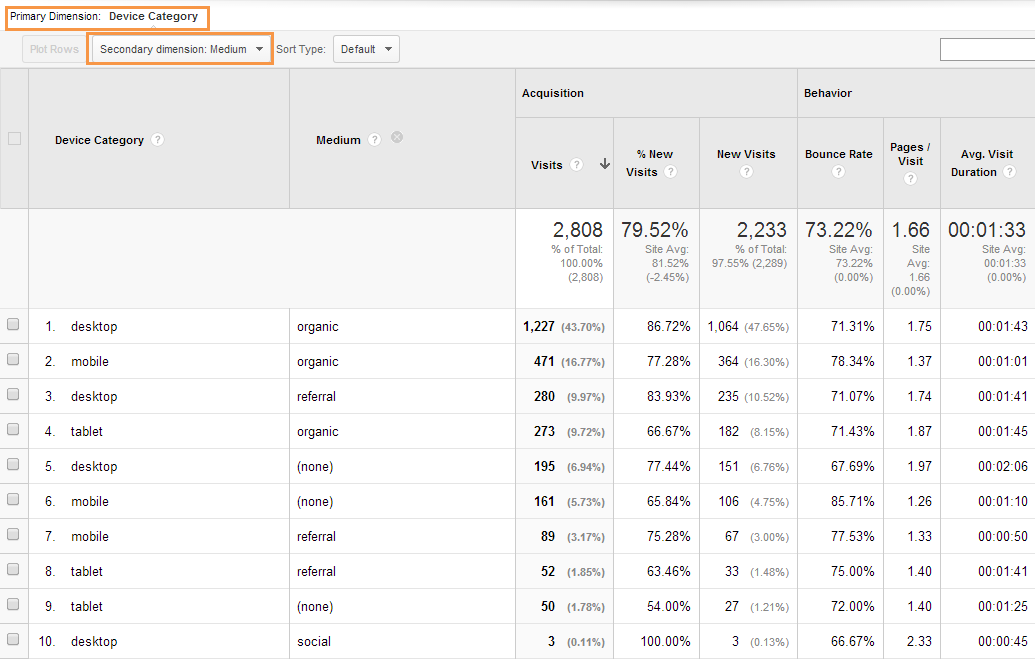Enhance Your Data Evaluation Making Use Of Additional Measurement in Google Analytics
Exploring the capabilities of additional measurements in Google Analytics opens up a realm of possibilities for refining information evaluation. The capacity to dissect info even more beyond the surface level provides a nuanced sight that can form critical choices. By layering additional measurements onto key information sets, a more elaborate narrative arises, clarifying individual interactions and performance signs. This dynamic method to information examination holds the essential to opening covert patterns and patterns that might transform how businesses translate their digital footprint.
Recognizing Second Measurements
Additional dimensions in Google Analytics refer to extra parameters that can be included to the main measurement, allowing for a much more comprehensive evaluation of information (Secondary Dimension in Google Analytics). By including second measurements, experts can section and filter information to discover patterns, patterns, and correlations that may not be apparent when looking at the information as a whole.

Benefits of Using Secondary Measurements
When evaluating data in Google Analytics, the application of second measurements offers important insights into customer habits and performance metrics. By including a second measurement to your primary information, you can dive deeper into the qualities of your website site visitors and their communications.
Furthermore, additional dimensions improve the context of your key data, giving a much more comprehensive view of customer engagement and efficiency metrics. On the whole, the use of second dimensions in Google Analytics can dramatically improve the deepness and quality of your information evaluation, leading to even more enlightened decision-making and boosted outcomes.
How to Include Second Measurements
By integrating second dimensions in Google Analytics, customers can acquire deeper understandings into their data analysis procedure, permitting for even more thorough analysis of user behavior and performance metrics. Adding secondary dimensions is an uncomplicated procedure that can dramatically boost the deepness of analysis. Once in the record, locate the "Second dimension" tab above the information table.
Analyzing Information With Second Measurements
Making use of second dimensions in data analysis supplies a more extensive understanding of individual habits and efficiency metrics. By adding an additional measurement to your primary data established in Google Analytics, you can dig much deeper into the characteristics of your website visitors and their interactions. For instance, incorporating the primary measurement of 'source/medium' with the second measurement of 'touchdown web page' can disclose which particular web pages are drawing in web traffic from various resources, aiding you maximize these pages for much better engagement.

Fundamentally, assessing data with additional dimensions empowers you to get beneficial understandings into user actions, identify fads, and make notified decisions to improve the efficiency of your digital buildings.
Ideal Practices for Second Dimensions
In data analysis, incorporating additional dimensions properly can dramatically enhance the depth of insights originated from metrics and customer actions patterns. When using additional measurements in Google Analytics or any kind of other analytical device, it is essential to abide by best practices to make sure the precision and significance of the information analysis.
One secret ideal technique is to carefully choose second dimensions that complement the main measurement being evaluated. Picking second measurements that give additional context or more division can provide a much more website link detailed understanding of the data. It is likewise necessary to avoid overcomplicating the evaluation by including also several additional dimensions, which weblink may lead to complication or dilution of understandings.
Additionally, it is recommended to trying out various combinations of key and second measurements to discover brand-new relationships and patterns. Regularly evaluating and refining the selection of secondary dimensions based upon the specific objectives of the evaluation can result in more workable understandings. By complying with these finest practices, information experts can take advantage of additional measurements successfully to improve the overall information evaluation procedure and decision-making capabilities.

Final Thought
To conclude, incorporating additional measurements in Google Analytics is important for a comprehensive information evaluation technique. By leveraging second dimensions along with main ones, marketing professionals and experts can reveal valuable understandings and connections that can inform decision-making and optimize electronic advertising methods. Recognizing exactly how to successfully utilize second measurements and complying with finest techniques will permit specialists to extract significant information and improve their total performance metrics.
Additional dimensions in Google Analytics refer to additional specifications that can be included to the main dimension, permitting for a more in-depth analysis of information. By review integrating secondary dimensions, experts can section and filter data to reveal patterns, trends, and connections that could not be evident when looking at the data as a whole. Incorporating the main dimension of 'source/medium' with the secondary measurement of 'landing web page' can reveal which details pages are attracting website traffic from various resources, assisting you optimize these web pages for better interaction.
One secret ideal method is to carefully pick additional dimensions that enhance the primary dimension being examined. By adhering to these best practices, information analysts can utilize second measurements efficiently to boost the total data evaluation procedure and decision-making capacities.